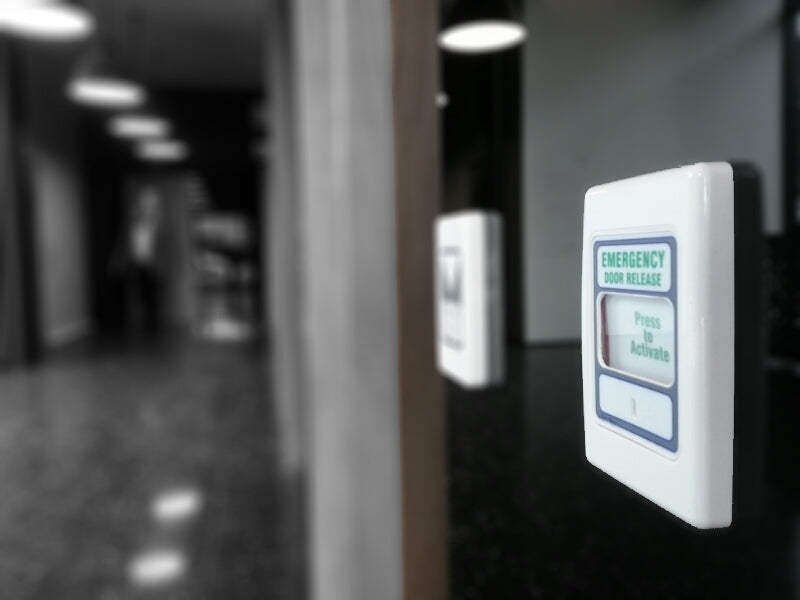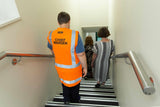This old chestnut comes up regularly, but it is important to make sure that we balance tenancy security with the ability to escape in a fire. Here are some useful observations on modern buildings.
Many commercial buildings now are designed with a central set of toilets in an open-plan space which allows the area to be divided into two tenancies, who will share the facilities. We often find that each tenancy wishes to restrict access back into their tenancy by only their staff, so places a locking device on the door so only authorised persons can access the door. Often this is a swipe card or pin-access lock.
The problem of course is that if you leave your card or fob behind – or if the system fails – then you are stuck in the bathroom with no way out. We had a site some years back where an employee was inadvertently locked in the common bathroom as the last person out on a Friday, and without access out or a phone on them, was not discovered until Saturday afternoon when the cleaners arrived. If a fire occurred, they would be trapped.
All access-controlled systems on egress doors must be approved under a building consent. This would require that at least one of the doors out of the common area has an Emergency Door Release switch (EDR) which would allow the lock to be over-ridden in an emergency. This works well and can sound an alarm if the device is operated.
The use of manual locking devices such as a turn snib, with the door is unlocked to allow entry into the common amenities area and re-locked once the person leaves, have been subject to a determination by the ministry of Business Innovation and employment, which was overruled by a court judgement in 2021 when challenged by a District Council. The court noted that the building code required that increased doors must be able to be opened from the inside without the use of a key at any time and found that the practise of manually locking a door to a tendency was unacceptable.
Access issues such as this can be tricky, and we would urge you to contact our compliance team to discuss your options before you make changes to locking devices within your building. This can save a number of problems from occurring and preventing the building warrant fitness from being issued. Use the 'contact us’ form on our website or email BWOF@ffp.co.nz if you have any questions on fire egress.






